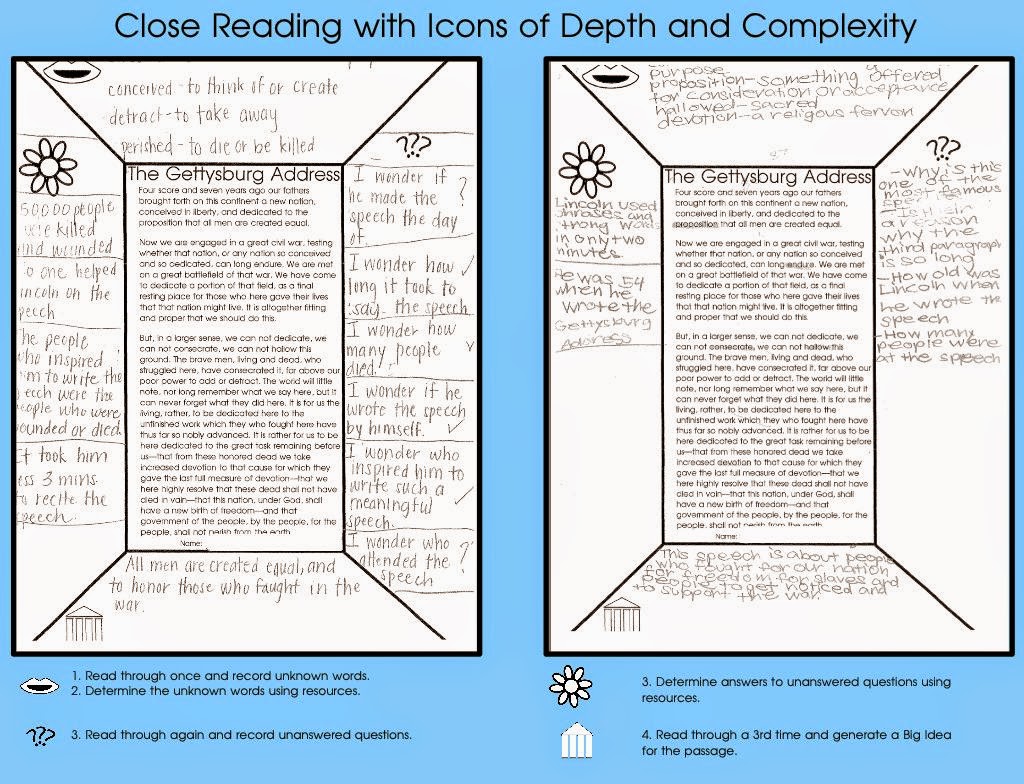Close Reading is all the rage these days.
It's getting a lot of paparazzi attention in teaching circles.
Or am I just late to the party?
Anyways, I am currently working on helping my 5th Graders memorize the Preamble (to the United States Constitution) and my 6th graders memorize "The Gettysburg Address."
We started with close reading strategies using a frame organizer incorporating the Icons of Depth and Complexity. If you aren't familiar with the Icons, it isn't necessary to "know" them to use this lesson.
Download the frames here for Free from my IMS Bove TPT Store.
Click on the picture below.
1. To begin with, I had previously exposed both speeches to my class by watching informational videos on Brainpop.com and listening to the songs mentioned in my blog on this page.
2. Then I passed out the frame and asked students to highlight any unfamiliar words in the passage.
3. Afterwards, I asked them to record up to 4 of the highlighted words in the Language of the Discipline Section.
4. Then they looked up the meaning of the words. We used iPads, but be careful of the word "propositioned" in the Gettysburg Address.
5. We then shared out our new vocabulary and discussed words that may have had multiple meanings.
6. Next the students read the passage again, this time recording any Unanswered Questions they may have encountered while reading.
7. Afterwards, they researched the Details for the answers of least 4 questions.
8. Finally, we read the article again looking for he Big Idea of the passage. After a discussion, students recorded their ideas.
STUDENT SAMPLES
I have to say, I felt like both of these Close Reads were successful in helping the students understand the meaning of the passages, making them more comprehensible for memorization.
IMS Bove























